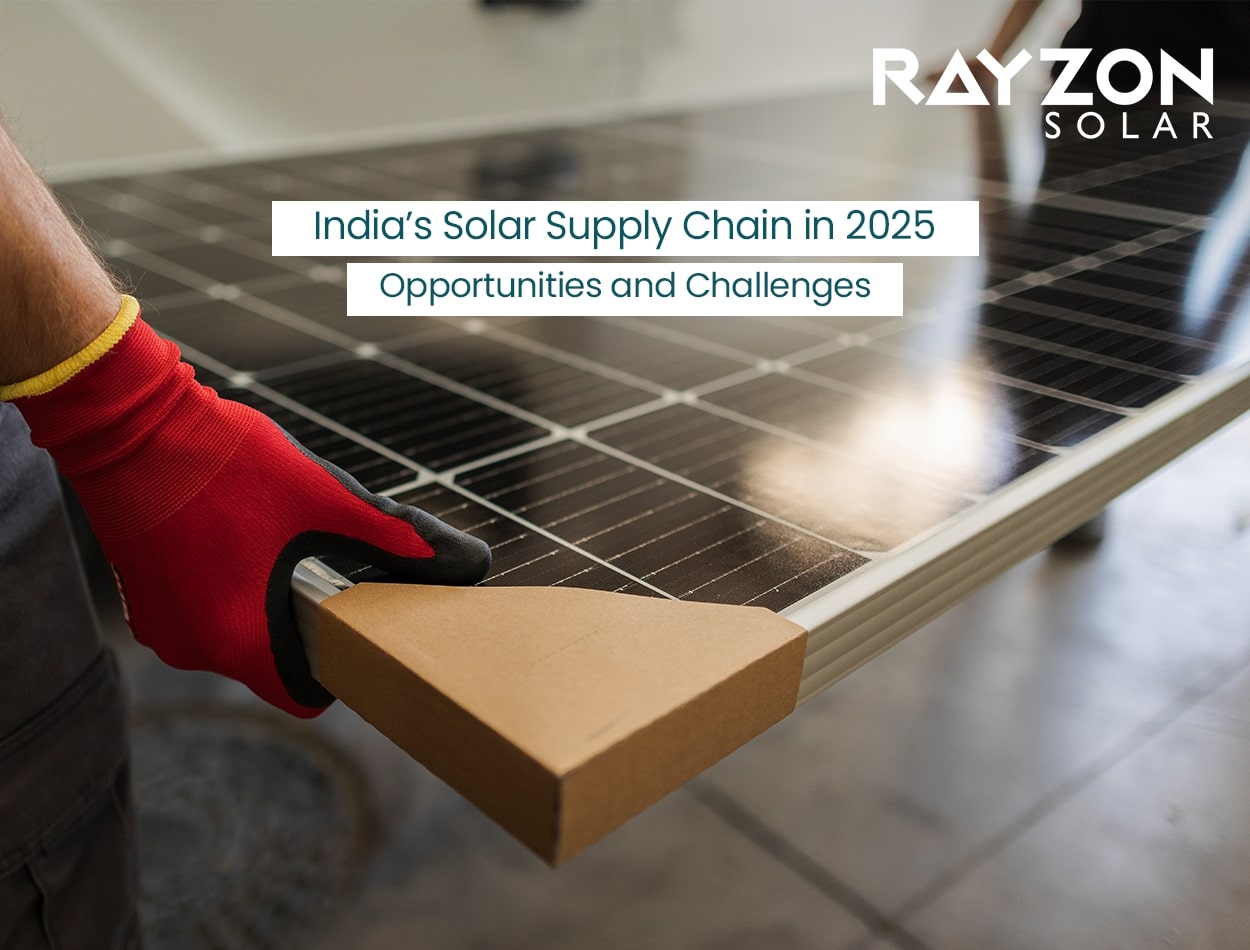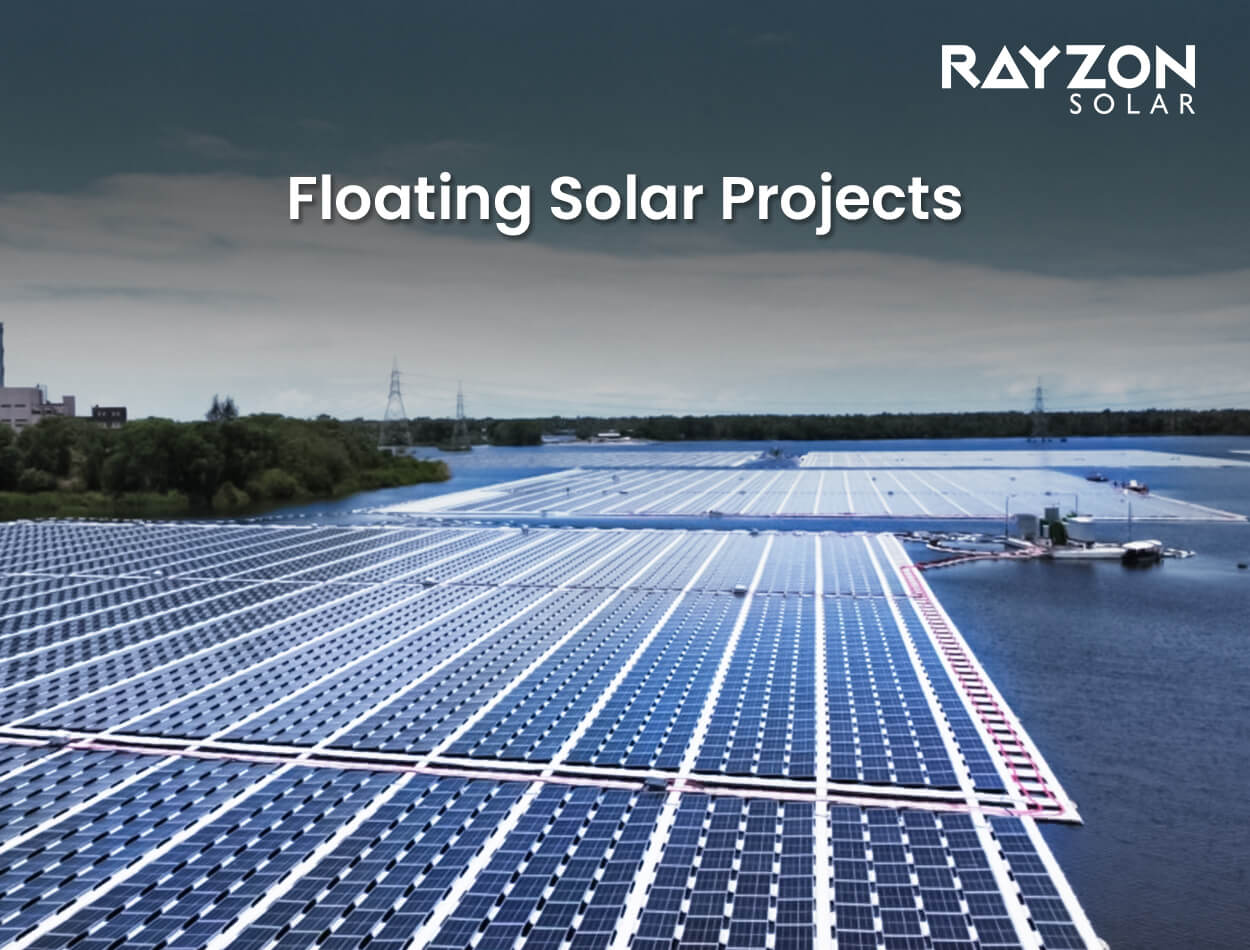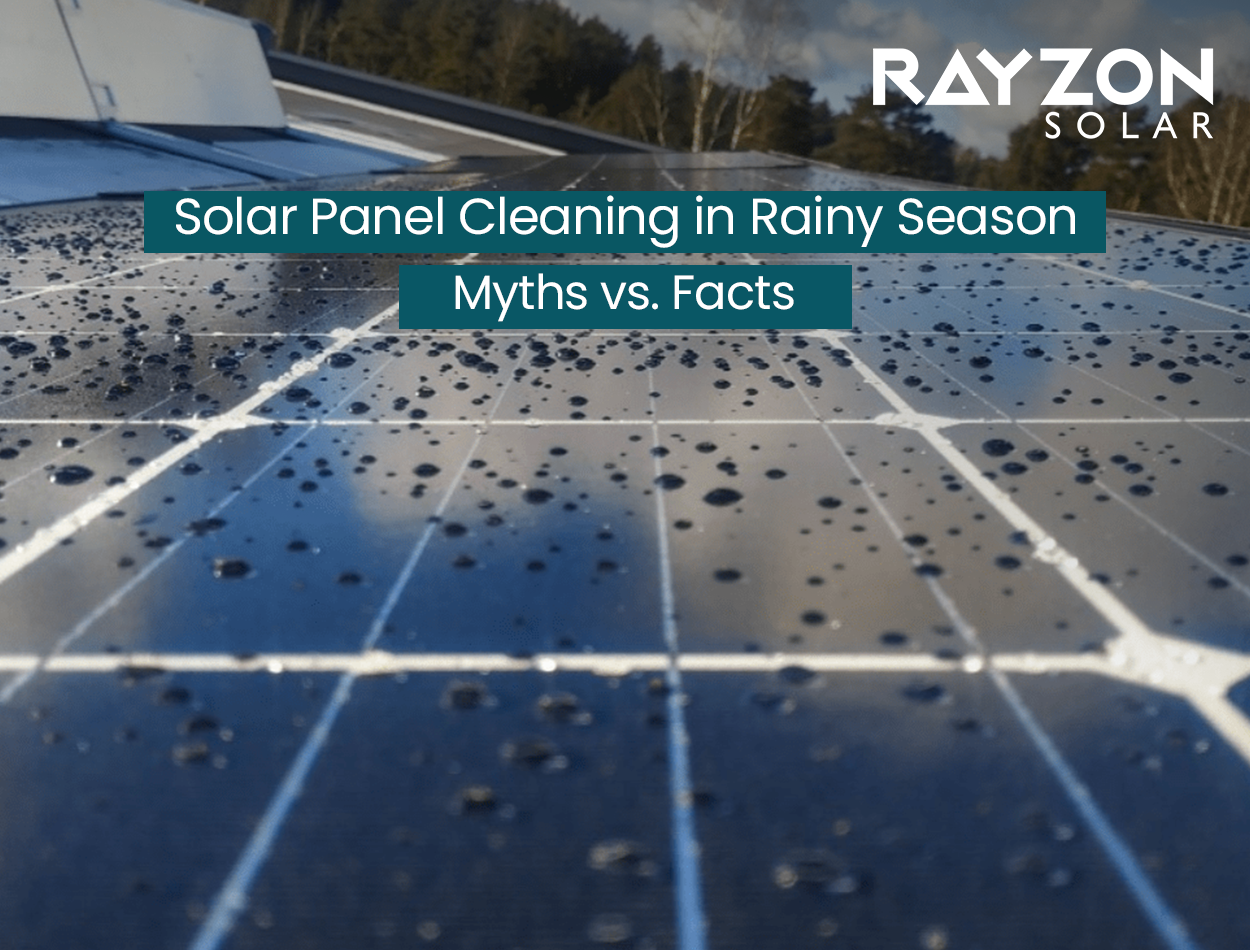
India’s Solar Supply Chain in 2025: Opportunities and Challenges
India’s solar sector entered a transformative phase in 2025. As the nation chases its ambitious target of 500 GW of non-fossil fuel energy by 2030, the solar supply chain has become a core pillar of this journey. With manufacturing capacity booming, government support rising and private investments scaling up, India is not just fulfilling domestic demand but emerging as a global solar manufacturing hub. Yet, challenges like upstream import dependence, cost competitiveness and technological bottlenecks continue to test the resilience of India’s solar supply chain.
Let’s explore the opportunities and challenges that will define India's solar supply chain in 2025 and what this means for the future of clean energy.
Opportunities in India’s Solar Supply Chain (2025)
India’s solar industry in 2025 is witnessing a remarkable transformation, marked by a surge in domestic manufacturing, rising exports, and strong policy support. The country is rapidly building a robust solar supply chain, enabling local manufacturers to scale operations and attract global attention. This shift is not only strengthening India’s energy sector but also creating new economic opportunities across states and industries.
What sets this phase apart is the convergence of technological progress, government incentives, and strategic global positioning. From doubling module manufacturing capacity to emerging as an export hub through the “China Plus One” strategy, India is capitalising on multiple fronts. These opportunities are laying the groundwork for long-term energy independence and making India a critical player in the international solar supply ecosystem.
1. Massive Growth in Manufacturing Capacity
India’s solar module manufacturing capacity skyrocketed from 38 GW in March 2024 to 74 GW in March 2025, nearly doubling in a single year. PV cell manufacturing also tripled from 9 GW to 25 GW. This growth is not random; it’s powered by strong policies like the Production Linked Incentive (PLI) Scheme, which has already attracted over INR 41,000 crore in investments and created thousands of jobs.
Key Insight: The solar supply chain is benefiting from clear government direction, long-term vision and aggressive localisation policies.
2. “China Plus One” Strategy Fueling Export Potential
India is now becoming a serious contender to China in the solar supply ecosystem. In 2024, India exported 5.8 GW of PV modules, triple the figure from the previous year.
Why It Matters: India's cost advantage in labour, plus policy-driven manufacturing, is making it a reliable alternative to China in global solar supply chains.
3. Advancements in Solar Cell Technologies
Leading manufacturers are investing in high-efficiency PV modules using next-gen technologies like:
- TOPCon (Tunnel Oxide Passivated Contact)
- HJT (Heterojunction)
- Perovskite-Silicon Tandem Cells
These technologies are pushing panel efficiencies to 23.1% and beyond, ensuring better ROI for both domestic and international buyers.
4. Emergence of Regional Solar Hubs
States like Gujarat, Rajasthan, Telangana and Tamil Nadu are rapidly becoming solar manufacturing ecosystems. With integrated production setups, ranging from ingots and wafers to modules, these states are leveraging port connectivity, power availability and policy incentives.
Example:
- Gujarat now hosts India’s first monocrystalline silicon ingot manufacturing facility.
- Tamil Nadu and Telangana are expanding green energy-powered industrial parks for solar cell production.
5. Policy Support Driving Self-Reliance
Key initiatives shaping India’s solar supply chain in 2025 include:
- PLI Scheme Phase 2
- Domestic Content Requirement (DCR)
- Approved List of Models and Manufacturers (ALMM)
- BCD (Basic Customs Duty) on imports
These policies are fostering a robust Atmanirbhar Bharat ecosystem in solar energy manufacturing.
Challenges in India’s Solar Supply Chain (2025)
While India’s solar sector has made impressive strides in recent years, several critical challenges continue to hinder its full potential. Beneath the surface of booming manufacturing and export growth lie structural gaps that need urgent attention. These include limited upstream capabilities, overreliance on imports for key components, and high production costs driven by energy intensity and technological limitations.
To establish a truly resilient and self-sustaining solar supply chain, India must address these bottlenecks head-on. From building a stronger foundation for ingot and wafer production to ensuring access to advanced manufacturing technologies, overcoming these challenges is essential for maintaining momentum. Tackling them will not only improve India’s competitiveness on the global stage but also enhance its energy security and long-term industrial strength.
1. Dependence on Imported Components
Even though India is making strides in module and cell manufacturing, it still depends on imports for upstream materials:
- Polysilicon
- Ingots
- Wafers
In FY 2024, $3.89 billion out of $7 billion in solar imports came from China. This dependence creates:
- Supply chain risks
- Pricing instability
- Geopolitical vulnerabilities
Solution: Investing in local upstream production and incentivising indigenous ingot and wafer manufacturing is crucial.
2. Limited Upstream Infrastructure
While domestic module and cell capacity are booming, ingot and wafer production are still nascent. Only one 2 GW ingot-wafer plant began operation in FY25.
Why the delay?
- High capex
- Energy-intensive processes
- Need for technical expertise
- Lack of access to low-cost renewable energy
3. High Energy Costs Affecting Competitiveness
India's coal-heavy power grid makes upstream production (like polysilicon refining) costlier and more emissions-intensive compared to China.
A fully localised Indian supply chain today is around 15% more carbon-intensive than China's.
Some manufacturers like First Solar are switching to solar and wind to power their production lines, offering a roadmap to green manufacturing in India.
4. Technology and R&D Gaps
India still lags in:
- Access to affordable cutting-edge machinery
- Process automation
- Research for efficiency gains
This limits India’s ability to compete on cost and efficiency, especially with Chinese Tier 1 manufacturers.
5. Execution Gaps in Policy Implementation
Some well-intended schemes like:
- CPSU Scheme Phase II
- Renewable Energy Manufacturing Zones
…are facing delays, limited uptake, or procedural bottlenecks, weakening their intended impact.
The Outlook: Bright but Needs Strategic Action
India’s solar supply chain in 2025 is marked by:
- Exponential capacity growth
- Rising exports
- Strong domestic demand
- Supportive government schemes
However, to transition from a booming market to a dominant global player, India must:
- Reduce import dependency
- Strengthen upstream manufacturing
- Lower carbon intensity
- Invest in R&D and advanced tech
- Accelerate green-powered factories
With India already ranked among the Top 3 global solar markets, the right moves today can make it the solar manufacturing capital of the world by the end of the decade.
How Rayzon Solar Fits into India’s 2025 Supply Chain Evolution
At Rayzon Solar, we’ve aligned our operations to these emerging trends:
- Our high-efficiency 625WP TOPCon and bifacial solar panels are manufactured using industry-leading technologies.
- We are scaling our solar module and cell capacity to meet growing domestic and global demands.
- Our commitment to sustainability ensures lower emissions across our operations.
- Rayzon Solar is actively contributing to India’s PLI-driven solar manufacturing journey.
Explore our innovations and sustainable manufacturing at 👉 www.rayzonsolar.com
Frequently Asked Questions (FAQs)
Q1. Why is India’s solar supply chain important in 2025?
It ensures energy security, supports green goals and boosts job creation while reducing import dependence.
Q2. What are India’s biggest solar manufacturing challenges?
Import dependency, lack of upstream production and limited access to advanced tech.
Q3. Which states are leading solar manufacturing in India?
Gujarat, Tamil Nadu, Telangana and Rajasthan are leading regional solar hubs.
Q4. What technologies are driving solar efficiency in 2025?
TOPCon, HJT, bifacial cells and perovskite-silicon tandem technologies.
Q5. How is Rayzon Solar contributing to India’s supply chain?
By manufacturing advanced PV modules, expanding capacity and ensuring sustainability in operations.



